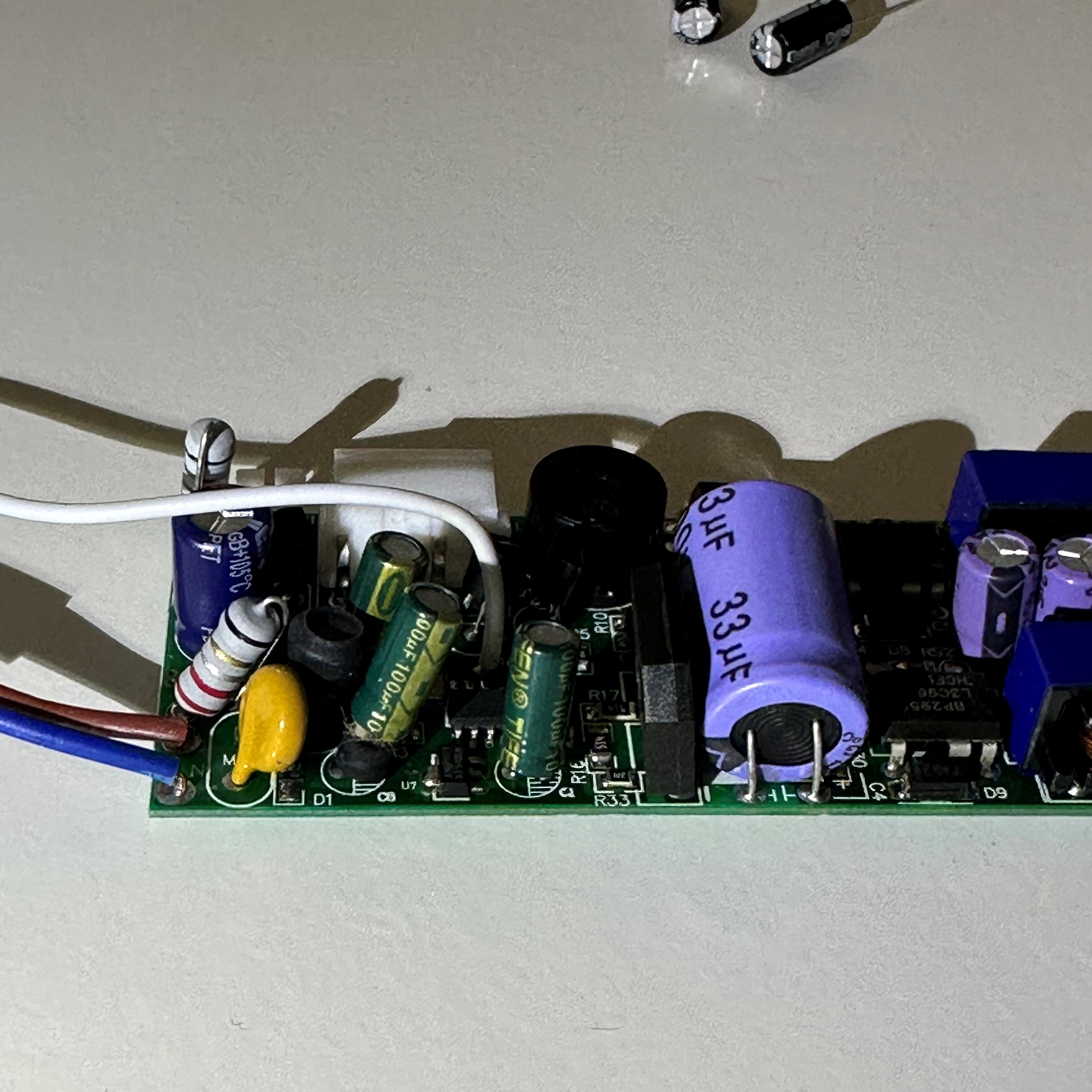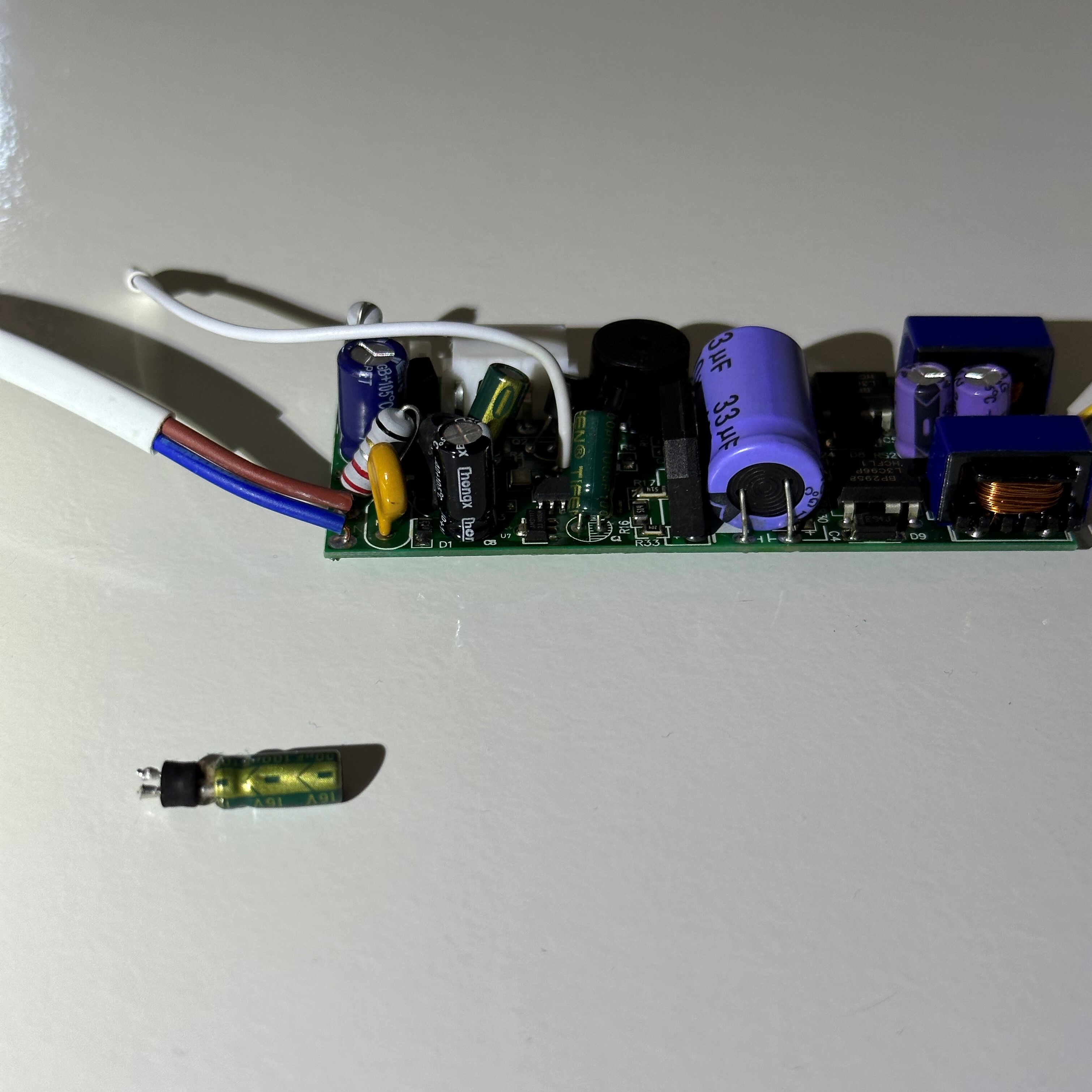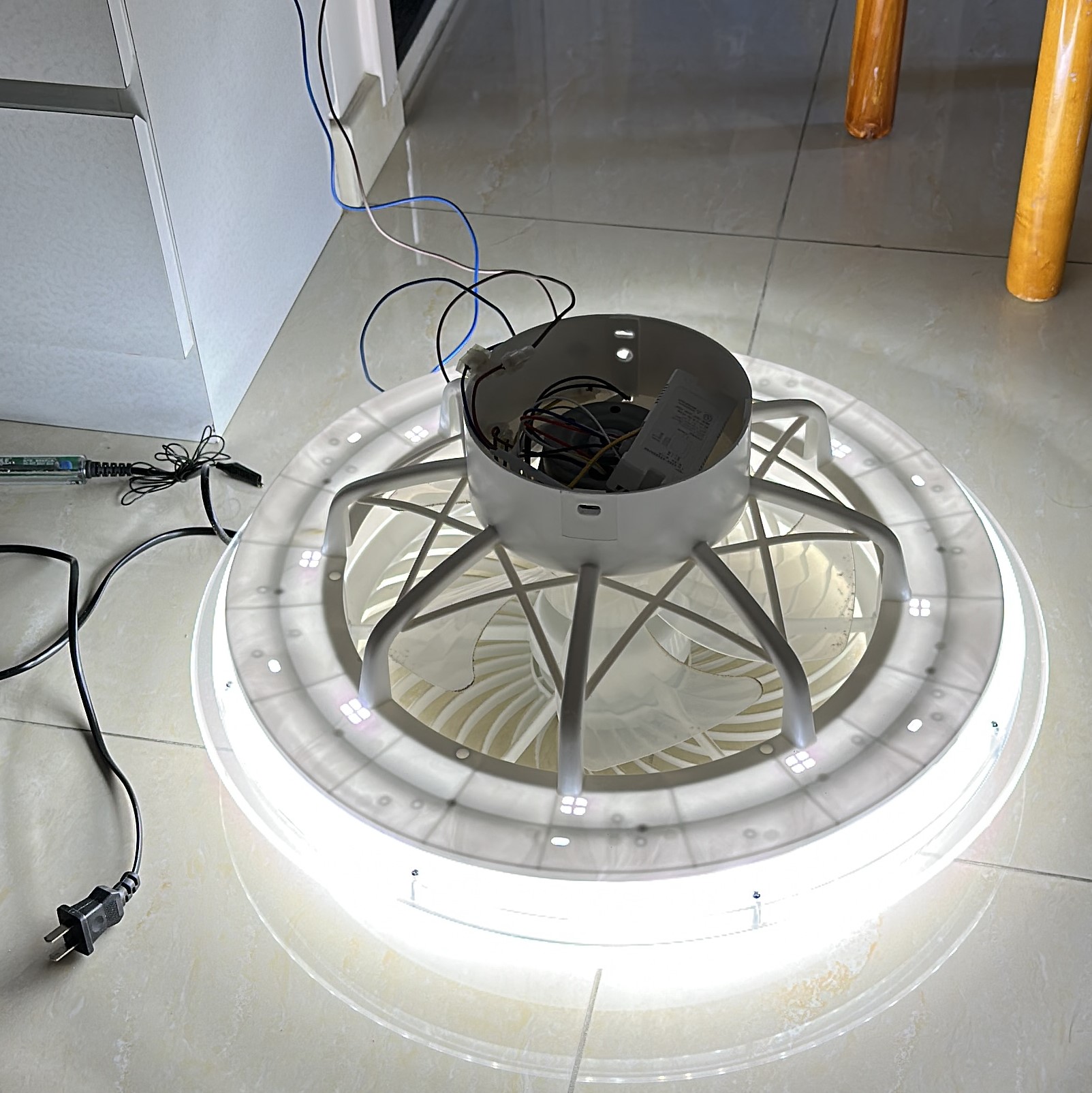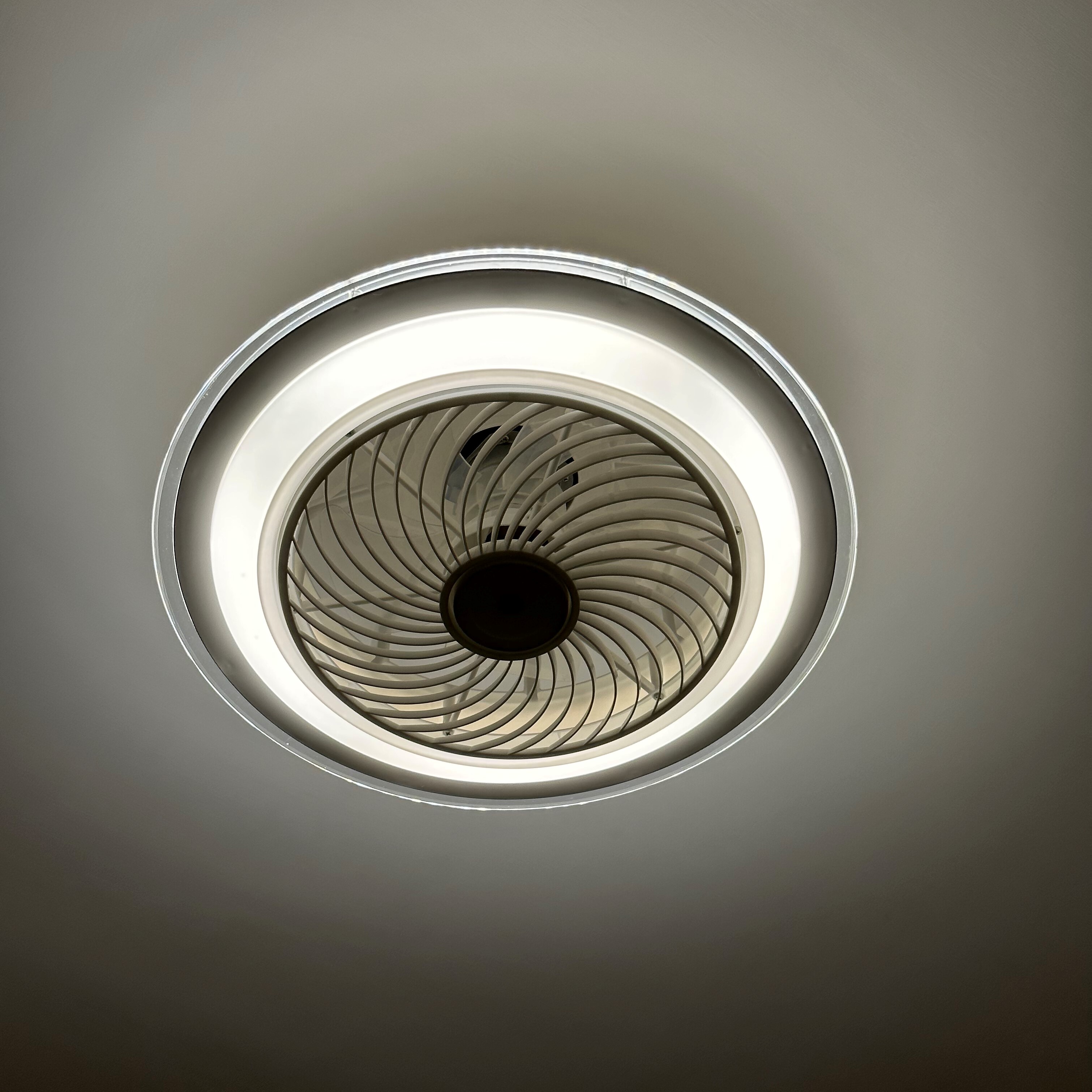Broken LED lamp - Exploded Capacitor
Two weeks ago, the LED lamp in my living room went black shortly after giving a loud “pop” sound. Out of frustration, I tried turning the light switch on and off repeatedly, and occasionally it flashed for a brief second, before going dark again. I knew the LED arrays were intact and it was certain that the control or power supply circuitry had failed.
The LED lamp was disassembled and upon opening the plastic box that contained the PCB, I immediately spotted there was a blown capacitor. The black plastic base of the capacitor is visible and has separated from the metal housing.
To fix it, I simply desoldered the blown capacitor and replaced it with a new one. The original one was 16V 100uF, I replaced it with a 25V 100uF because I thought maybe the voltage spiked too high for whatever reason and resulted in an exploding capacitor. Though in hindsight, overvoltage was probably not the cause.


Hooking it up to mains and watching it light up again, I was pleasantly surprised by how easy the fix was. To make sure the fix indeed worked and that there weren’t more failures, I kept the lamp on for a few hours before installing it back to the ceiling. During the test, I found that the circuit produces more heat than I would have thought. The plastic box containing the circuitry was warm to borderline hot. It was measured with my multimeter that the plastic casing reached more than 40 degrees C upon running for a few hours continuously. Remember, it reached this temperature under an open environment. When it’s up against the ceiling, it’s essentially in a closed environment with no airflow so the temperature will be even higher.
Though the exact cause for the failure of the capacitor can’t be determined, I think excess heat should be the main reason that it went kaput. It’s reasonable to think that the thermal performance is unideal and it’s probably a design flaw that is hard to overcome. If this exact failure happens again, I’ll replace the capacitors with polymer capacitors that have higher temperature ratings or simply drill some holes for ventilation.


P.S. This happened more than two weeks ago, so why am I writing about it just now? I had final exams so that’s why. It also means I’m free from exams now and I think I can spend some time in the coming weeks to start completing some of the webpages.